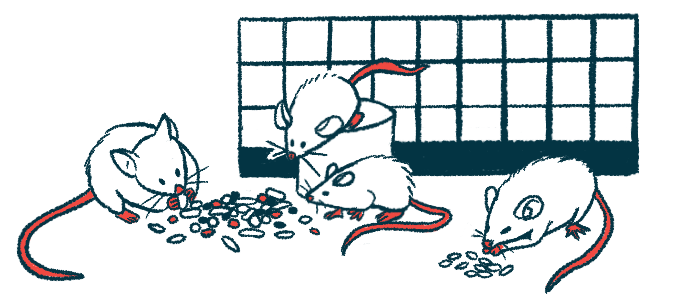Abnormal Brain Motor Circuits Help Explain Rett Symptoms: Mouse Study
Normal synchronization of electrical signals over time was not observed in model

Mice with Rett syndrome show abnormalities in their brain circuitry that helps to control movement, which may contribute to motor dysfunction that often arises as a symptom of the disease, a new study reports.
The results provide “novel in vivo [in living animals] evidence for abnormal motor circuit function” in Rett syndrome, researchers say.
The study, “MeCP2 deficiency impairs motor cortical circuit flexibility associated with motor learning,” was published in the journal Molecular Brain.
Rett syndrome is mainly caused by mutations in the MECP2 gene, resulting in neurological dysfunction that gives rise to the disease’s symptoms. Problems with motor function are a common Rett complication, which implies that the disease causes alterations in the motor cortex, a part of the brain chiefly responsible for coordinating voluntary movements.
However, how motor cortex function changes in Rett syndrome remains poorly understood. A team led by scientists at George Washington University conducted a series of experiments in a Rett mouse model to learn more.
“The goal of this study was to explore the effect of Rett-associated neuropathological changes on the dynamics of motor cortex activity during movement,” the team wrote.
Abnormalities in motor cortex activity were noted in Rett mice
In the experiments, mice with or without MECP2 mutations were implanted with a device to measure electrical activity in the motor cortex, and then the mice were put through a series of physical exercises where they ran on a treadmill at varying speeds. As expected, the Rett mice showed marked deficits in motor function during these tests that worsened as the mice aged — compared to the controls, Rett mice took fewer, shorter steps at the same treadmill speeds.
In addition, several abnormalities in motor cortex activity were noted in the Rett mice. In all animals, the researchers were able to identify a population of neurons (nerve cells) in the motor cortex that fired whenever the mice were running, and other neurons that fired when the mice were inactive.
In the control mice, the number of these activity-specific neurons decreased over time, which the researchers said likely reflects the neural circuits growing more refined and efficient as the mice continuously did a repetitive task. However, this decrease in number toward more efficiency was not observed in Rett mice.
By contrast, the number of neurons that were more active when the mice were at rest increased over time in the Rett mice, but not in the controls.
“Rest-selective cells … increased over time, and the emergence of these rest-selective cells happened most prominently in the weeks before the animal expired, suggesting that their activity could relate to the animal’s disease progression,” the researchers wrote.
Usually when mice have to do a repetitive motor task (in this case, treadmill running), motor cortex neurons involved in coordinating the process are known to undergo a process called synchronization, where related neurons will all fire in time with each other to improve the efficiency of signals being sent.
While increasing synchronization over time was observed as expected in control mice, it was not detected in Rett mice at any age. The researchers noted that the loss of synchronization in Rett mice “occurred across all cell types and was most clearly seen during locomotion.”
“This loss of synchronization between behaviorally-relevant neurons with learning could contribute to the motor regression observed in these animals,” they added.








